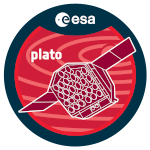Magnetic fields and internal gravity waves have been identified as the main candidates to explain the efficient transport of angular momentum in stellar radiative regions expected from helio- and asteroseismic measurements in the Sun and all across the Hertzprung-Russel diagram. In this context, recent studies established that a magnetic field may modify the frequency spectrum and the amplitude of propagating gravity waves by possible trapping or resonances phenomena. Therefore, the co-existence of the two mechanism is unavoidable and PLATO could help to disentangle the situation. Nevertheless, their interplay has never been studied in terms of stellar evolution.
In this work, we choose to examine the impact on the propagation of gravity waves in solar-type stars of a magnetic field generated by the Tayler-Spruit dynamo action, which has recently been observed in numerical simulations, and is broadly studied as a potential solution to the angular momentum transport problem. We present self-consistent rotating stellar evolution models of solar-type stars with rotation-induced mixing and transport by magnetic instabilities. We then characterise the propagation of gravity waves in such magnetised medium and look at the case of standing gravity modes and progressive gravity waves, from the pre-main sequence up to the red-giant branch.
This allows us to demonstrate that both transport of angular momentum by the Tayler-Spruit instability and by internal gravity waves modified by magnetic field should be taken into account simultaneously, while the reduced amplitude of mixed modes observed in RGB stars should be due to a fossil magnetic field rather than to the Tayler-Spruit instability. Finally, we will present some perspectives of these results to build a robust picture of the transport of angular momentum in stellar interiors.
|
|
|
|
Gravity waves in the magnetised radiative core of low-mass stars: consequences for asteroseismology and transport of angular momentum
1 : CEA Saclay
CEA, CNRS, Université Paris-Saclay, CEA Saclay 91191 Gif sur Yvette France
2 : CEA Saclay
CEA, CNRS, Université Paris-Saclay, CEA Saclay 91191 Gif sur Yvette France
|

 PDF version
PDF version
